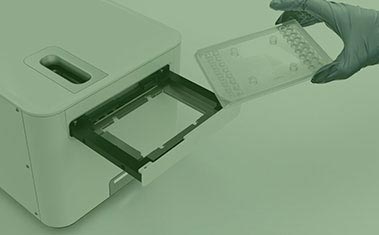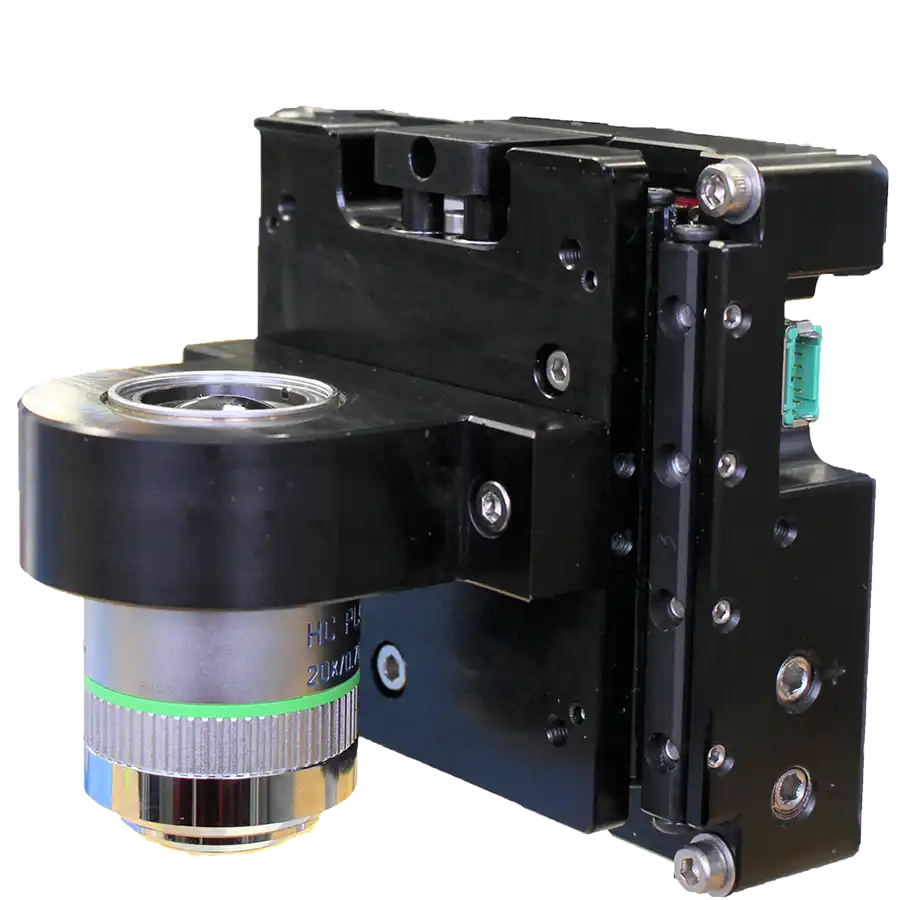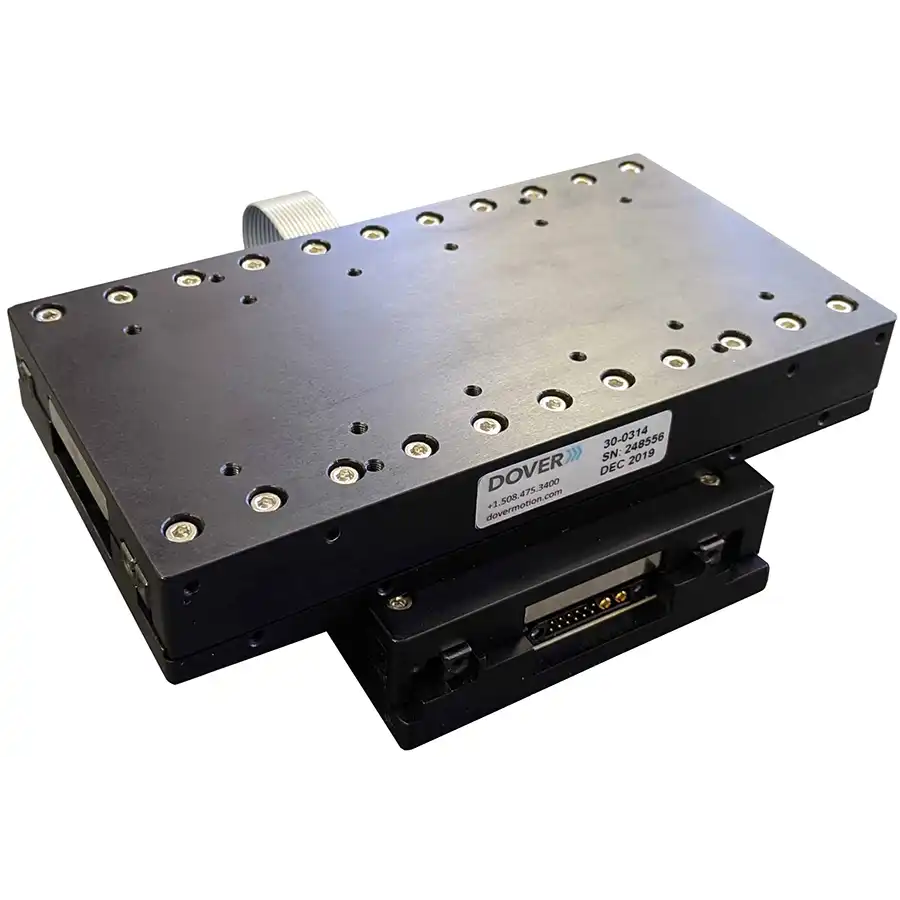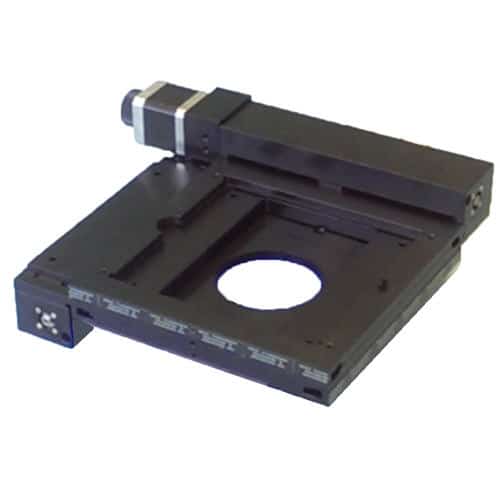Nanopositioning Solutions for Next Generation Sequencing
What is Next Generation Sequencing?
Next-Generation Sequencing (NGS) is a group of technologies that perform large-scale DNA and RNA sequencing. Also referred to as massively parallel sequencing, this umbrella of technologies provides detailed information of genomic landscapes and provides a depth of data previously unattainable by Sanger sequencing methodology alone.
In 2003, the work of multiple people analyzing billions of nucleotides with capillary sequencers was finally published as the Human Genome Project1. This astounding scientific achievement took years to complete. Using NGS, a single laboratory today could complete this same work within hours. As sequencing became more attainable, applications for NGS continues to grow: personalized medicine, genetic disease research, clinical diagnostics and more. Since NGS methodologies enable hundreds of thousands of genes to be analyzed at one time, data can be collected both quickly and cost effectively, expanding information access in research, biomedical, environmental and forensic sciences.
There are three critical attributes that make the NGS approach breakthrough: speed, throughput and accuracy. As a trusted precision motion expert within optical imaging applications, Dover Motion is proving to be a valuable partner to NGS instrument developers with high-performance solutions, including our advanced XYZ stages, SmartStage™ XY stages, and vertical Z stages.
Related Case Studies
Sample Motion
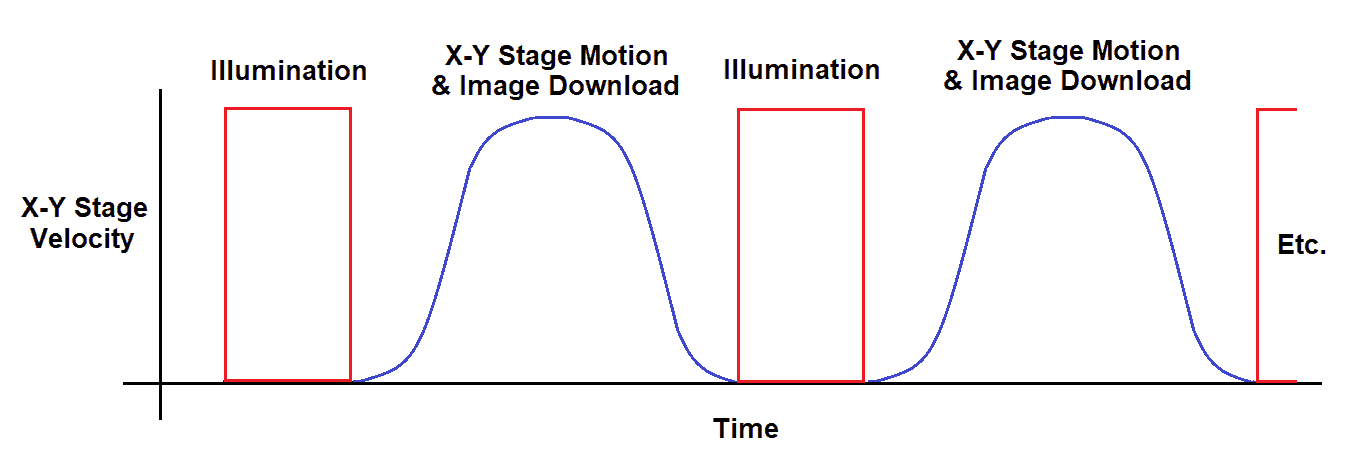
Design engineers turn to Dover Motion to help them reduce time spent during step-and-settle motion and increase throughput. For example, the Dover Motion SmartStage™ XY nanopositioning stage can provide the following benefits:
- Reduced settling time:
- Settling ±50 nm in <45 msec after 3mm platform move
- Settling ±50 nm in <15 msec after 333 µm platform move
- Bi-directional repeatability <25 nm
- Sub-micron accuracy
- Holding Stability 5 nm RMS

Constant Velocity Imaging
Constant velocity scanning is the most popular option for high-throughput microscopy applications. The consistent motion of the sample, combined with a synchronized imager, enables high-resolution, high-throughput data collection. As throughput requirements increase, more NGS platforms are seeking out the expertise and motion technology provided by Dover Motion. We have made extremely constant velocity motion stability a priority for decades, investing in both mechanical and control solutions. Some examples of our investments include crossed roller guideways, low noise electronic drive and control, 5nm resolution feedback devices and advanced electronic triggering capabilities (TOP). Dover Motion first developed Trigger On Position capabilities for demanding Semiconductor applications in the late 1980s, and is now leveraging this approach for microscopy applications that use Time Delay Integration (TDI) cameras. We integrated Trigger On Position (TOP) inside of our SmartStage XY motion controller to provide triggering of line scan cameras for increased accuracy of the image acquisition. TOP is typically used with cameras and lasers in sync with the motion and position of the stage. For example, combining this software capability, smooth crossed roller bearings, and our ultra-high-performance encoder inside of the SmartStage XY nanopositioning stage enables low spatial triggering jitter and consistent platform movement over the entire travel, resulting in extremely low velocity ripple while scanning and ± 30nm stability at rest.
- Optional SmartStage XY Ultra Resolution (5 nm)* Encoder: (Recommended for TDI Scanning Applications)
- Provides ultra low encoder sub-divisional error resulting in +/- 5nm position accuracy per 100 um of travel. This is especially useful when used with Trigger On Position for accurate camera or laser triggers while scanning.
- Encoder sub-divisional error (3-sigma) (nm) of 10 nm
- SDE (sub-divisional error) 1st harmonic = 2 or 3nm RMS (over 20 micron pitch)
* 2.5 nm encoder resolution also available: consult Dover Motion applications engineering.
NGS platforms that use our nanopositioning stage solutions notice the following benefits:
- 5 nm resolution
- Bi-directional repeatability <25 nm
- <10 nm RMS cyclic error
- Camera triggers synchronized to position of the sample with <100 ns latency @ 1m/sec
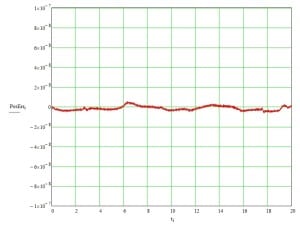
Objective Focus
There are two fundamental approaches to focusing: contrast and laser autofocusing.
Contrast (Software) Focusing
Contrast focusing is primarily a software-based approach where the image from the camera is analyzed as the Z-axis steps through the nominal and presumed focal planes The images are put through a high-pass filter that derives a value for fine-scale contrast in order to focus. This method doesn’t require costly autofocusing equipment but the tradeoff is that this method can be slow. Typically the Z axis moves the objective 15 to 30 times taking an image at each location to determine the optimal Z position for the best focused images taken by the camera.
Dover Motion created the DOF-5 nanopositioning stage to address the needs for a repeatable, quick to settle Z-Axis. The DOF-5 provides the following benefits for contrast focusing:
- Fast, accurate, and repeatable 100 nm moves
- 5nm RMS position stability
- 25nm repeatability
- High throughput steps that are quick to settle
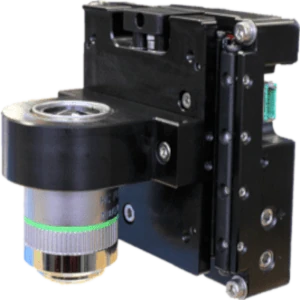
Laser Autofocus
Optical-based autofocusing relies on sending a laser diode beam down through the objective where it reflects off the sample or a nearby glass surface. This continuous tracking laser autofocus method provides the highest performance but can be considerably more expensive to implement. This architecture allows the Z-axis stage to be driven by the digital laser autofocus. Dover Motion has been building high-performance, direct drive Z nanopositioing stages for many years with thousands of systems in the field, many of which operate around the clock. Our newest stage is our DOF-5 nanopositioning stage for objective focusing. Customers who use the DOF-5 notice the following benefits:
- Fast, accurate, and repeatable 100nm moves
- Integrated optical linear encoder with 1.25nm or 5nm resolution
- Internal, high performance servo drive and control with reduced cabling
- Direct connection to Autofocus systems for easy integration
Fluorescence Imaging
While the sequencing process may vary between platforms and companies, all optical-based instruments are looking for specific light wavelengths associated with the four bases of DNA: Adenine (A), Cytosine (C), Guanine (G) and Thymine (T). During sample preparation, a different color fluorescent tag is bound to indicate which of the four bases is present. These instruments rely on precision optical filters, commonly on a rotary indexer or linear array. Often referred to as “filter cubes”, these assemblies contain an excitation filter, an emission filter, and occasionally a beam splitter. Each one of these four cubes must be quickly and accurately moved into the FOV in order to pick up the minimal number of photons being emitted by the fluorophore. We have a robust history of working with optical and fluorescence imaging . The experts at Dover Motion are consulted on optical architecture options where we work with our customers to design a system with the highest performance and throughput. For example, our expertise provides the following benefits:
- Cost-effective options for both rotary or linear indexing architectures
- Multiple technologies to support a range of price and performance requirements
- Custom design experience for unique filter changing needs.
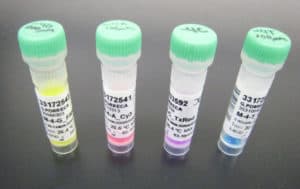
Other Capabilities
Dover Motion provides collaborative solutions for motion control that enable NGS platforms to focus on what they do best: large scale DNA and RNA sequencing. Our engineers and designers have both deep understanding of our core technologies and in a wide range of ancillary application technologies. We are well versed in automated microscopy, control theory, fluorescence microscopy, vibration control, optimizing servo tuning and structural resonances. Collaborating with our experts enable NGS platforms to decrease instrument development time and prevent system challenges before they arise.
Here are some examples of where Dover Motion’s expertise can be of value to NGS system engineers:
- Preventing cables, tubing and temperature control elements from hindering platform motion.
- Best practices for other controlled systems such as temperature control.
- Normalizing the sample plan to the optical beam path, either scheduled or dynamically.
- Vibration control best practices including managing the consequences of isolation.
- Advanced methods to further reduce step and settle time.
- Controlling the filter rotary indexer or linear array.
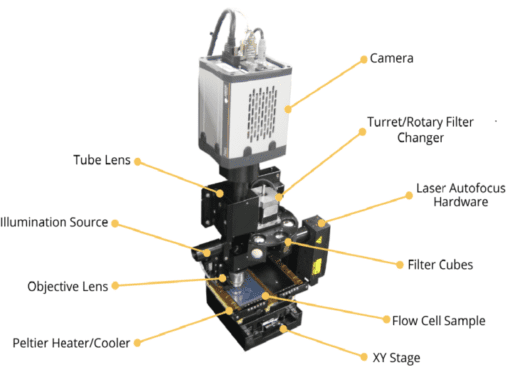
Building the Right Precision Motion Control System
Dover Motion offers a variety of standard products for your precision motion control needs, and we also specialize in collaborating with our clients to configure the right motion solution for their unique application. With more than 50 years of experience in the life sciences, diagnostics, and factory automation industries, we understand your needs and industry and can provide you the flexibility you need to hit your cost and schedule targets.
Related Products
The DOF-5™ microscope stage is optimized for objective focusing with increased travel, higher bandwidth, and lower cost than piezo stages.
| wdt_ID | Travel | 5 mm |
|---|---|---|
| 1 | Resolution | 1.25 nm |
| 2 | Repeatability | < 50 nm |
| 3 | Bandwidth | > 225 Hz |
The award winning SmartStage™ XY stage offers high precision and includes an embedded controller inside the stage.
| wdt_ID | Travel | 50 - 200 mm |
|---|---|---|
| 1 | Accuracy | ≤ 10 μm |
| 2 | Repeatability | 0.8 μm |
| 3 | Payload | 10 kg |

